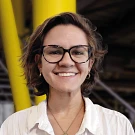Seguiu-se uma remodelação completa "" : muitos componentes de grandes dimensões foram substituídos por componentes de plástico mais económicos. Desde então, a procura de sistemas de gravação voltou a aumentar. O sistema laser portátil "c-jet" permite a gravação de objectos de vidro de maiores dimensões e a utilização de operação multi-modo para produção em lote. Ao mesmo tempo, é fácil de transportar, pelo que também pode ser utilizado em feiras comerciais e outros eventos. Graças ao seu design compacto e à sua grande janela de visualização, atrai muita atenção. A máquina foi sucessivamente redesenhada a partir do zero. Como resultado, pode agora ser oferecida a metade do preço. O peso total também foi reduzido em cerca de 40 kg.
Utilização do drylin®
A grande janela de visualização motorizada com proteção laser contém agora guias miniatura drylin® N com elementos deslizantes em polímero, utilizados numa largura de carril de 40 mm. Encaixam-se perfeitamente em perfis de alumínio standard. Como em todas as guias lineares, os carros correm em perfis de alumínio anodizado durante o funcionamento a seco. Trata-se de um sistema de guias deslizantes económico e flexível. Além disso, os casquilhos deslizantes de polímero iglidur® J, tribologicamente optimizados, também estão instalados na área da janela de visualização. São utilizados para o acionamento da janela e na deflexão do acionamento da correia dentada. Os rolamentos feitos de iglidur® J são isentos de lubrificação e manutenção e combinam um coeficiente de fricção extremamente baixo com uma vida útil muito elevada em muitos veios.
Peça central da ótica laser
A peça central do sistema é a ótica do laser. É aqui que ocorre a acumulação real de camadas do produto de vidro resultante. A mesa da peça de trabalho pode ser ajustada não só horizontalmente, mas também verticalmente, o que acaba por determinar a qualidade do produto final. A ótica do laser move-se para cima e para baixo durante o processo de maquinação. Para este efeito, é utilizada uma calha dupla drylin® W e rolamentos de caixa, bem como outros componentes individuais do extenso sistema modular. Estes vão desde suportes de binário para proteção adicional até às porcas de rosca trapezoidais drylin®, que são muito importantes para o resultado da gravação. Devido à estrutura em camadas da gravação, o feixe de laser tem de atingir camadas que estão muito próximas umas das outras. As porcas de rosca trapezoidal drylin® também realizam estas tarefas com sucesso em operação automatizada e impressionam com um funcionamento suave com pequenos movimentos do fuso e quase nenhum desgaste mensurável. Todos os componentes são pouco ruidosos, insensíveis à sujidade e ao pó, isentos de corrosão e particularmente leves. As guias lineares silenciosas são eficientes e funcionam tão bem que agora também são utilizadas num sistema laser industrial.






